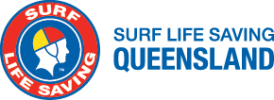This guideline outlines how zoning provides a beach management tool to isolate or separate activities that may be incompatible with the other activities or isolate hazards or activities that are required to be contained to a particular area.
There are two ways that zoning may be applied:
- Confining a particular aquatic activity to a specific location; and
- The segregation of activities that are a risk to other aquatic users.
The activities that are most commonly zoned include:
- Swimming;
- Body boards;
- Surf craft;
- Surf boats;
- Power craft (including the use of PWC’s and skiing).
Marking Zoned Areas:
Areas that have been zoned for a particular use (or to exclude certain activities) can be defined by using flags, signs or buoys.
Time zones can also be used as a management tool allowing or restricting specified activities to be conducted at prescribed times.
Establishing Zoned Areas
To establish a system of zoning the following steps may be appropriate:
- Conduct a risk assessment to establish the need for zoning and the most appropriate methods for application;
- Consultation with relevant stakeholders;
- Establishment of a legislative framework (i.e., included in Local Laws);
- Communication with user groups.
Monitoring of Zoned Areas
Once established, zoned areas will require a level on monitoring. Zoned areas usually require a level of “policing” to ensure compliance.



Post your comment on this topic.